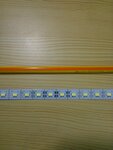bimalkamal
Member level 1

In attached diagram the transistor is used to switch on the LEDs if the charger is off and it turns off the LED is the charger is on. Now why the biasing circuit uses the 47mfd capacitor instead of a resistor? Can anybody please explain the function of those diodes in the circuit? Thanks in advance.
